Plants that really shine when backlit?
greenhearted Z5a IL
9 years ago
Featured Answer
Sort by:Oldest
Comments (67)
laceyvail 6A, WV
9 years agolast modified: 9 years agowantonamara Z8 CenTex
9 years agolast modified: 9 years agoRelated Discussions
Something really ordinary and really beautiful
Comments (21)Very nice! It looks (and, from the sounds of it, behaves) very similar to my Sedum Humisifusum. My partner's mom gave me a little snippet of this two years ago. It was no more than 2 inches. Its about 2 sq ft now and I just found another patch growing in a totally different part of the yard. I like this one's flowers, though. They sort of remind me of Sedum Matrona's flowers when they start out. Thanks for sharing!...See Morehow, when, and if to remove Kozy Koats from tomato plants
Comments (5)Depending... I've left them all on season before and have taken them off. I live at a higher elevation in a small clearing amidst the forest, have moving shade from tall conifers, so have to nurse along the warmth loving tomatoes. This year, I'm leaving them on though it isn't as lovely. They are in an open position supported by an extra stake. I've also slipped a coffee can over the stake and inserted in soil to prevent the kozy from falling over & squishing the tomato plant and to give more reflected light. Some years I also put the filled jugs next to the plants inside the kozy. Just haven't done that this year because the plants are just barely rising over the kozy. My dad lives NW of us at a lower elevation with more wind and sun nearly all day, yet still has his tomatoes wrapped in plastic until harvest time. He uses concrete wire around the large barrel and plastic is open at the top. He has drip irrigation. I've given up comparing harvest dates as his garden has always beat mine. Nowadays, his consists of containers only in a small area in the backyard with his acreage sold off. I started with containers 20+ years ago, but now grow in the ground and raised beds. The difference is the amount of sunshine & heat he gets. He'll plant cukes by seed and have earlier harvest than me with my hardened off transplants peat pots cucumbers in soil in cloche w/ water jugs, etc. I can't make the sun shine more here unless I cut down the forest, which is not happening. Corrine...See MoreIs the Sun Shining? Is It Still Raining At Your House?
Comments (16)My gardening buddy across the street said he had some chelated iron he would share with me for those plants that are showing signs of deficiency - all this rain is washing lots of nutrients out of the soil. This may also help the tomatoes, Sheri. We'll see what Dawn says. The Husky Cherry Red tomatoe plants are doing much better than any other cherries I've EVER planted. The foliage is so rugose that I don't think much of anything is eating it at all. Good for the tomatoes, bad for the hornworms. They have blooms all over them, and every time I pass them, I give them a shake. I'm getting lots of tiny little green balls, about the size of a pea, all over them. YEAH! I will definitely plant these again. The fennel is growing in leaps and bounds now, and I have about 30 black swallowtail eggs on my 4 plants. I put my little Bordered Patch and Silvery Checkerspot cats in my pop-up butterfly hamper. Some of the Silveries are already starting to make a chrysalis, and they are SO TINY, that they just look like tiny black balls when they form a "J". I rescued them all, you may remember, because the wasps were hovering all around the sunflower patch. They love to suck them dry. There is this HUMONGOUS red wasp that keeps hanging around - what kind is it? A hornet? Ugh.....gives me the shivers! Dawn, a month ago I had tons and tons of ladybugs. Now, all of a sudden, I see maybe one a day. What happened to them all? I do have plenty of lacewing eggs all over, so maybe they will come along and eventually consume the aphids. I wish the ladybugs would come back. I'm afraid to buy any because in all likelihood something is eating them and I don't want to just release a bunch of food for whatever it is. The mosquitoes are just horrible! I sure wish I had that bat house. But, I've almost decided I'll have to get a 30' pole (bury and set part of the pole in concrete) to mount it on. My house is a small cottage and doesn't have a very tall roofline. The website Dawn referred me to suggests at least 20' off the ground. I tried washing those aphids off, but it is so hard for me to bend over and get them all. I think I'll take some alcohol and Q-tips and just go sit on the ground and swab them off. I don't think the power spraying is really killing them. While I think the aphids serve a good purpose (they are great for identifying milkweed in the field) or growing around the house (like I have cynanchum laeve, milkweed vine, popping up all around), they sure do cause the black sooty mold on the plants. In the past, I've never had to worry about it cause the ladybugs did their job. But, it looks like it's a "hands on" year for me. Does anyone know how long it takes trumpet vine to blooms from seed? I have one that is the peach flowering one that is now two years old and hasn't bloomed yet. I think I heard that sometimes it takes 3-5 years for them to bloom when grown from seed. BTW - I think we had about half an inch of rain yesterday afternoon. It was very loud, hard rain storm. Susan...See MoreCan Moon Shine be Planted in The Ground ?
Comments (6)Greg, that looks like a great little microclimate, even if it would be too cold there in a more exposed spot (which IDK one way or the other.) The cement and bricks absorb heat and hold it, a great way to push/cheat zones anywhere (within reason,) though you may still get some frost bite on the tips (if there's frost.) Glad I didn't choose this winter to try leaving any in the ground (and folks were gracious enough to offer homes to the excess plants) here this year. Light frost is one thing, an ice storm and temps in the teens are way beyond that! I need to build some handy-dandy brick planters... Hope you'll remember to offer an update next spring, if not sooner! We are moving (about 1/2 mile, but no beds to plant in yet) so I've put Sans in the ground in Mom's yard for now. Even if/when temporary, it's so cool to watch what they do! - Tiffany...See MoreUser
9 years agolast modified: 9 years agowantonamara Z8 CenTex
9 years agolast modified: 9 years agogreenhearted Z5a IL
9 years agolast modified: 9 years agowantonamara Z8 CenTex
9 years agolast modified: 9 years agoTexasRanger10
9 years agolast modified: 9 years agoTexasRanger10
9 years agolast modified: 9 years agogreenhearted Z5a IL
9 years agolast modified: 9 years agoTexasRanger10
9 years agolast modified: 9 years agodbarron
9 years agolast modified: 9 years agowantonamara Z8 CenTex
9 years agolast modified: 9 years agoUser
9 years agolast modified: 9 years agoTexasRanger10
9 years agolast modified: 9 years agowantonamara Z8 CenTex
9 years agolast modified: 9 years agoNHBabs z4b-5a NH
9 years agolast modified: 9 years agolaceyvail 6A, WV
9 years agolast modified: 9 years agogreenhearted Z5a IL
9 years agolast modified: 9 years agograndmamaloy
9 years agolast modified: 9 years agoUser
9 years agolast modified: 9 years agoTexasRanger10
9 years agolast modified: 9 years agoUser
9 years agolast modified: 9 years agogreenhearted Z5a IL
9 years agolast modified: 9 years agoTexasRanger10
9 years agolast modified: 9 years agoNHBabs z4b-5a NH
9 years agolast modified: 9 years agogreenhearted Z5a IL
9 years agolast modified: 9 years agodbarron
9 years agolast modified: 9 years agogreenhearted Z5a IL
9 years agolast modified: 9 years agoUser
9 years agolast modified: 9 years agowantonamara Z8 CenTex
9 years agolast modified: 9 years agoTexasRanger10
9 years agolast modified: 9 years agogreenhearted Z5a IL
9 years agolast modified: 9 years agoTexasRanger10
9 years agolast modified: 9 years agogreenhearted Z5a IL
9 years agolast modified: 9 years agoTexasRanger10
9 years agolast modified: 9 years agogreenhearted Z5a IL
9 years agolast modified: 9 years agoUser
9 years agolast modified: 9 years agoTexasRanger10
9 years agolast modified: 9 years agowantonamara Z8 CenTex
9 years agolast modified: 9 years agogreenhearted Z5a IL
9 years agolast modified: 9 years agowantonamara Z8 CenTex
9 years agolast modified: 9 years agowantonamara Z8 CenTex
9 years agolast modified: 9 years agoTexasRanger10
9 years agolast modified: 9 years agogreenhearted Z5a IL
9 years agolast modified: 9 years agowantonamara Z8 CenTex
9 years agolast modified: 9 years agoMertie
8 years agoUser
8 years agoMertie
8 years agoUser
8 years ago
Related Stories
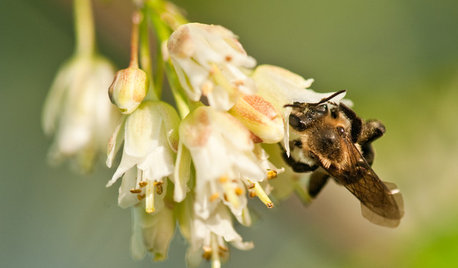
GARDENING GUIDESGreat Design Plant: Staphylea Trifolia Shines in the Shade
Plant American bladdernut for 3 seasons of interest: spring flowers and striped brown branches and bladder-like seedpods in fall and winter
Full Story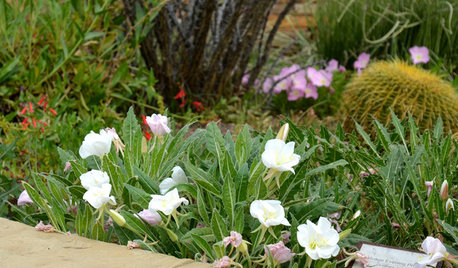
FLOWERS AND PLANTSTufted Evening Primrose Shines at Night
Oenothera caespitosa waits until the sun is ready to set before unfurling its large white petals that draw visitors and evening pollinators
Full Story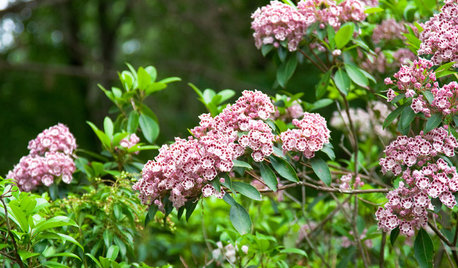
FLOWERS AND PLANTSKalmia Latifolia’s Origami-Like Flowers Shine in the Shade
This shade-tolerant shrub, also known as mountain laurel or calico shrub, thrives in East Coast woodland gardens
Full Story
GARDENING GUIDESWhen and How to Plant a Tree, and Why You Should
Trees add beauty while benefiting the environment. Learn the right way to plant one
Full Story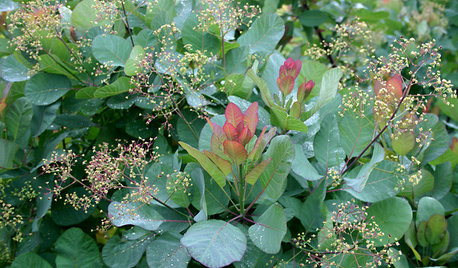
LANDSCAPE DESIGNGreat Design Plant: Old Fashioned Smoke Bush
Balance garden color with this shrub's cool blue-green foliage, luminous when backlit and sporting yellow-green flowers in spring
Full Story
WINDOWSHow to Ditch the Drapes and Let Your Windows Shine
If your home has beautiful windows and you don’t need to hide a view, consider dressing them in these elegant, creative ways
Full Story
ARCHITECTUREHouzz Tour: Easy, Breezy Home Lets the Light Shine In
Despite its narrow site, a serene new family home is flooded with natural light, thanks to a glass-lined internal courtyard
Full Story
MORE ROOMSWine Cellars That Shine
Innovative Cellars Celebrate Contemporary Wine Storage Design
Full Story
DECORATING GUIDESA Glimmer of Gold Leaf Will Make Your Room Shine
Make a unique, unexpected statement in any space with this precious metallic finish
Full Story
CONTEMPORARY HOMESHouzz Tour: Art and Natural Light Shine in a Contemporary Apartment
A designer helps create a peaceful and soothing home environment for a jet-setting D.C.-based professional
Full Story



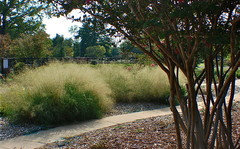

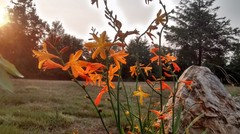
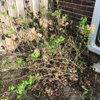

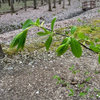
User